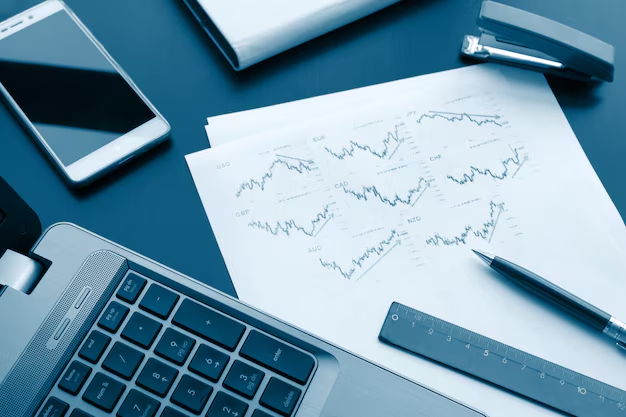Mastering Paper Trading with Fidelity: A Comprehensive Guide
Trading in the financial markets can be both thrilling and daunting, particularly for beginners. For those seeking to hone their skills without risking real money, paper trading emerges as an invaluable tool. Fidelity Investments, a well-established financial services firm, offers a robust platform for beginners and experienced traders alike to practice their strategies in a risk-free environment. Let’s dive into how to effectively paper trade with Fidelity, ensuring you gain the necessary experience before venturing into the live markets.
Why Consider Paper Trading?
Before we delve into Fidelity's offerings, it's crucial to understand the significance of paper trading. Here's why it might be the right step for you:
- Risk-Free Environment: Paper trading allows you to practice without the financial risk. You’re able to test your strategies and learn from mistakes without the anxiety that comes with losing capital.
- Skill Development: Enhance your trading skills, from reading charts to understanding market trends.
- Strategy Testing: Identify and refine your trading strategies over time.
- Confidence Building: Gain confidence in your trading decisions, crucial when transitioning to real money trading.
How to Get Started with Fidelity Paper Trading
Setting Up Your Fidelity Account
To start paper trading with Fidelity, you need an account. Here's how to get started:
- Visit the Fidelity Website: Navigate to the official Fidelity homepage and locate the account opening section.
- Select Account Type: Choose the type of account you wish to open (e.g., individual brokerage account).
- Complete Application: Fill in your personal details to open an account.
- Access to Platforms: Once your account is active, you'll have access to Fidelity's suite of platforms, including their paper trading functionalities.
Understanding Fidelity's Trading Platforms
Fidelity provides several platforms for trading. Here's a look at their features:
Fidelity's Learning Center
- Education First: Before diving into trading, explore the Learning Center to familiarize yourself with market terminology, strategies, and more.
- Interactive Courses: Participate in webinars and courses tailored for beginners, offering insights into trading strategies and market analyses.
Active Trader Pro
- Realistic Simulation: Fidelity's Active Trader Pro provides a realistic paper trading environment, enabling users to simulate trades using real-market data.
- Customization Options: Tailor the interface to suit your trading style, providing streamlined access to the tools and information you deem essential.
- Tutorials and Guides: Benefit from tutorials that walk you through using the platform efficiently.
Executing a Paper Trade: Step-by-Step Guide
- Log into Active Trader Pro: Use your Fidelity credentials to access the platform.
- Navigate to Paper Trading: Locate the paper trading option within the platform's toolbar.
- Choose your Asset: Select from a range of assets, including stocks, ETFs, or options.
- Enter Trade Details: Specify the stock symbol, order type (market or limit), quantity, and any additional parameters.
- Review and Execute: Double-check your trade details before executing to simulate the trade.
- Monitor Your Trades: Use the portfolio and trading logs to track the performance of your paper trades.
Maximizing Your Paper Trading Experience
Tips for Successful Paper Trading
Here's how you can make the most out of your paper trading experience with Fidelity:
- Set Goals and a Trading Plan: Define what you aim to achieve and devise a plan to guide your trading decisions.
- Record and Reflect: Maintain a trading journal to track your decisions and learn from outcomes.
- Focus on Self-Discipline: Treat paper trading as seriously as you would live trading to build the psychological fortitude required in the markets.
- Engage with the Community: Participate in forums or groups for shared insights and strategies.
Transitioning from Paper to Real Trading
Once you're comfortable with paper trading, transitioning to a live account might be the next step. Here are some considerations:
- Start with a Small Capital: Begin cautiously, reducing risk while acclimating to trading with real money.
- Apply Your Learnings: Use the strategies and discipline cultivated in paper trading to guide your real trades.
- Continuously Educate Yourself: Markets evolve and so should your knowledge and strategies.
Common Questions about Paper Trading with Fidelity
Q: Is there a cost associated with paper trading on Fidelity?
No, Fidelity offers paper trading features free of charge to account holders.
Q: Can I paper trade options with Fidelity?
Yes, options can be included in your simulated trades, enabling practice on advanced strategies.
Q: How does paper trading differ from real trading in terms of execution?
Paper trading simulates trades with virtual capital which may not account for slippage or the emotional aspects of real money trading.
Summary of Key Points: Getting the Most from Fidelity Paper Trading
- 🎯 Risk Management: Use paper trading to practice managing trades without risking real money.
- 📚 Continuous Learning: Leverage Fidelity's educational resources to enhance your understanding.
- 🤝 Community Engagement: Join forums to exchange ideas and strategies.
- 📈 Strategic Transition: Plan a strategic transition to real trading once confident.
By embracing paper trading with Fidelity, you set the foundation for a more confident and informed trading journey. Whether you're testing the waters or refining advanced strategies, this platform offers the tools you need to succeed. Remember, every expert trader started where you are now—a beginner exploring a world of possibilities.

Related Topics
- Are Fidelity Advisors Fiduciaries
- Are Fidelity Financial Advisors Worth It
- Are There Foreign Transaction Feels With Fidelity Debit Card
- Are You Allowed To Day Trade On Fidelity
- Can a Non Us Citizen Open a Fidelity Account
- Can I Buy Bitcoin On Fidelity
- Can I Buy Crypto On Fidelity
- Can I Buy Foreign Currency At Fidelity
- Can I Convert Fcash To Money Market Fidelity
- Can I Find Fidelity Account With Joint Account